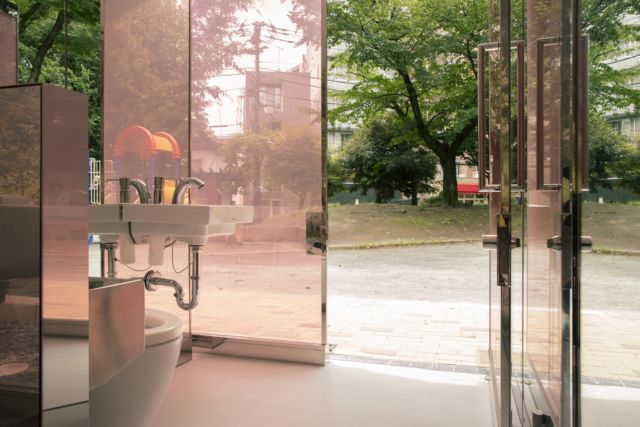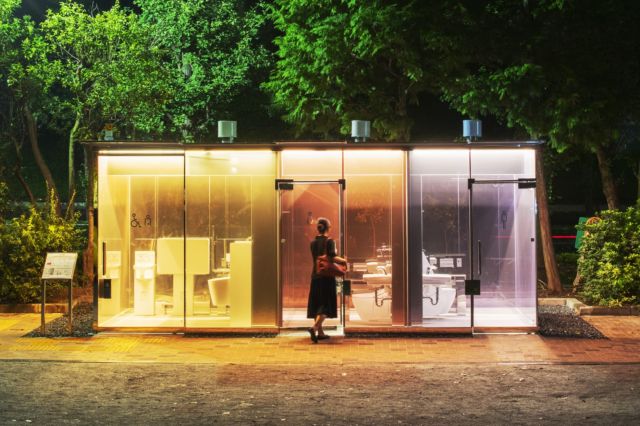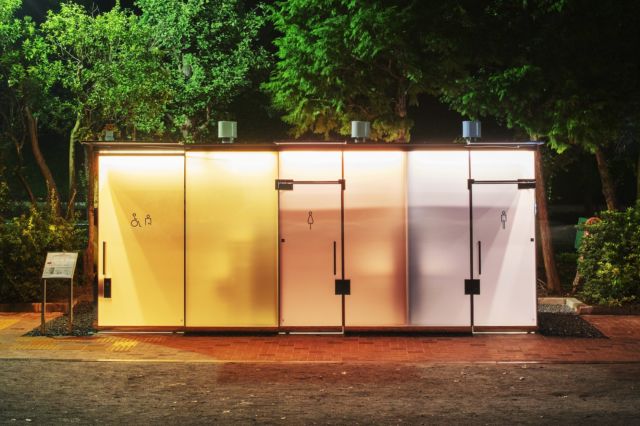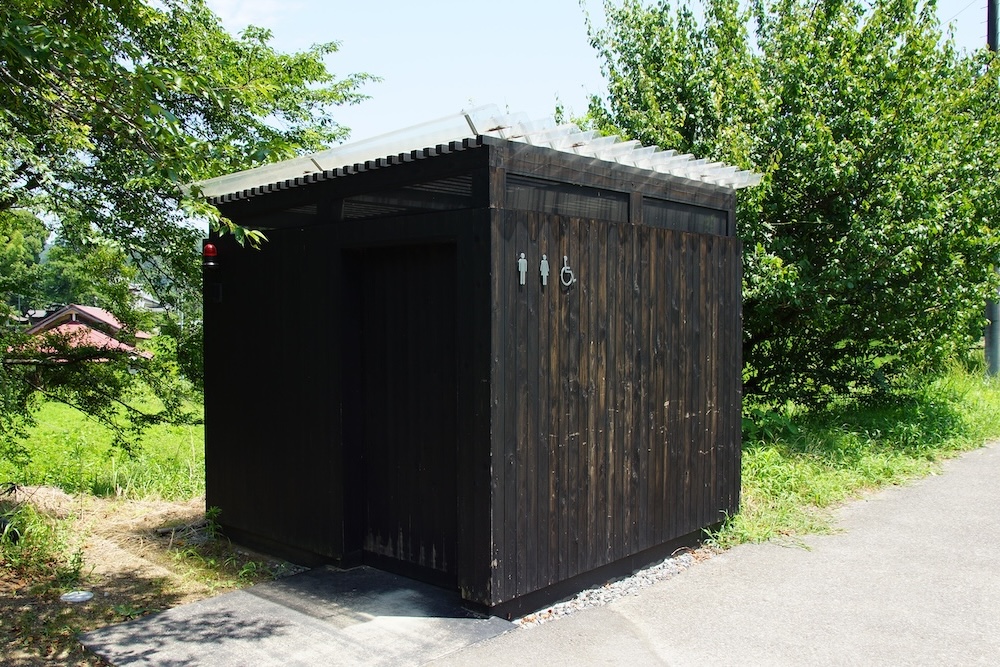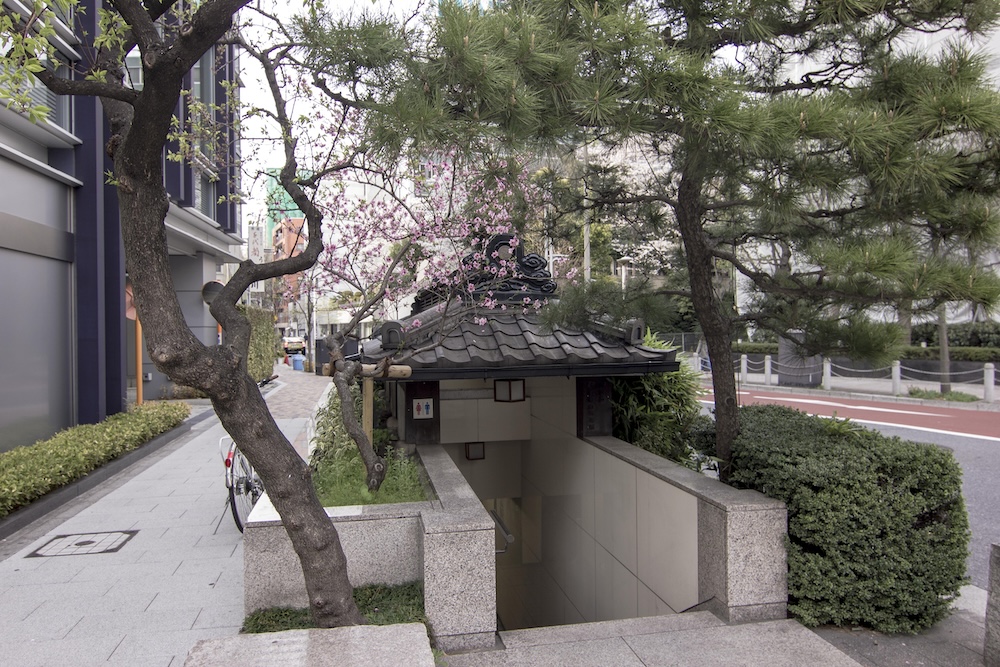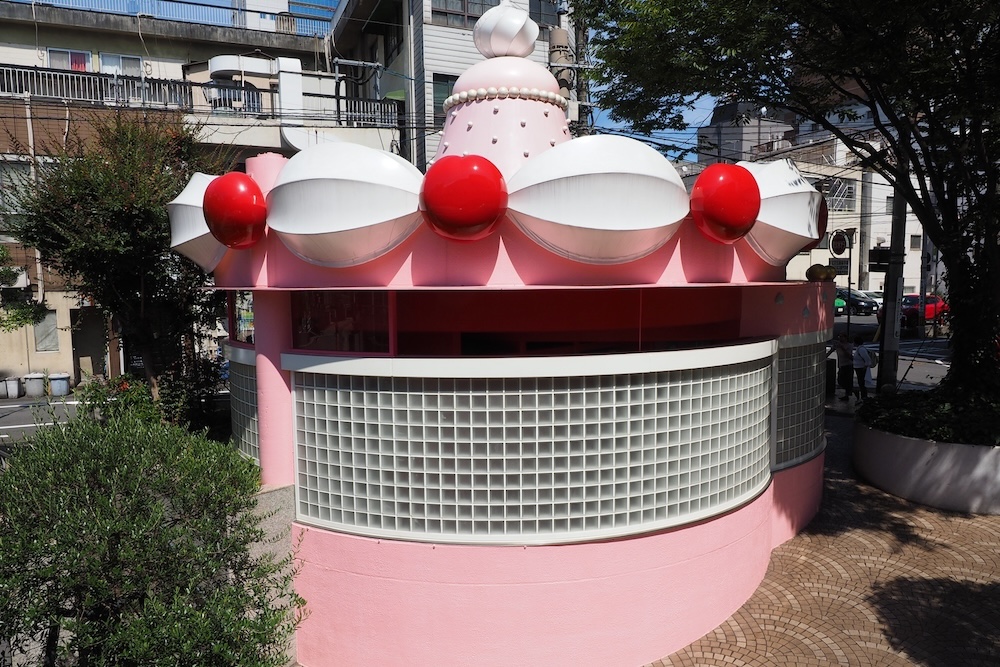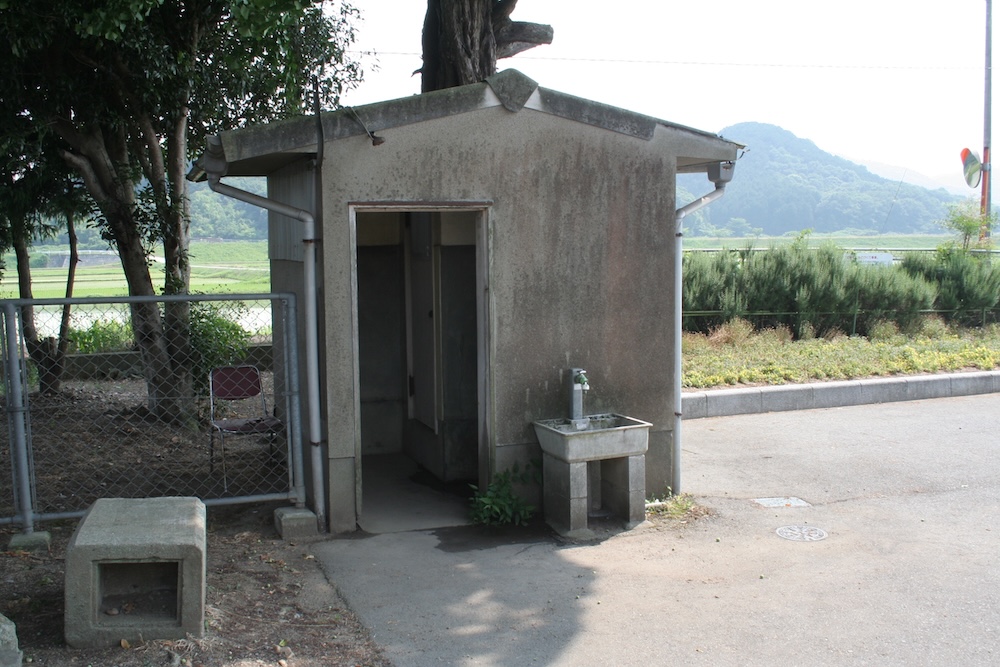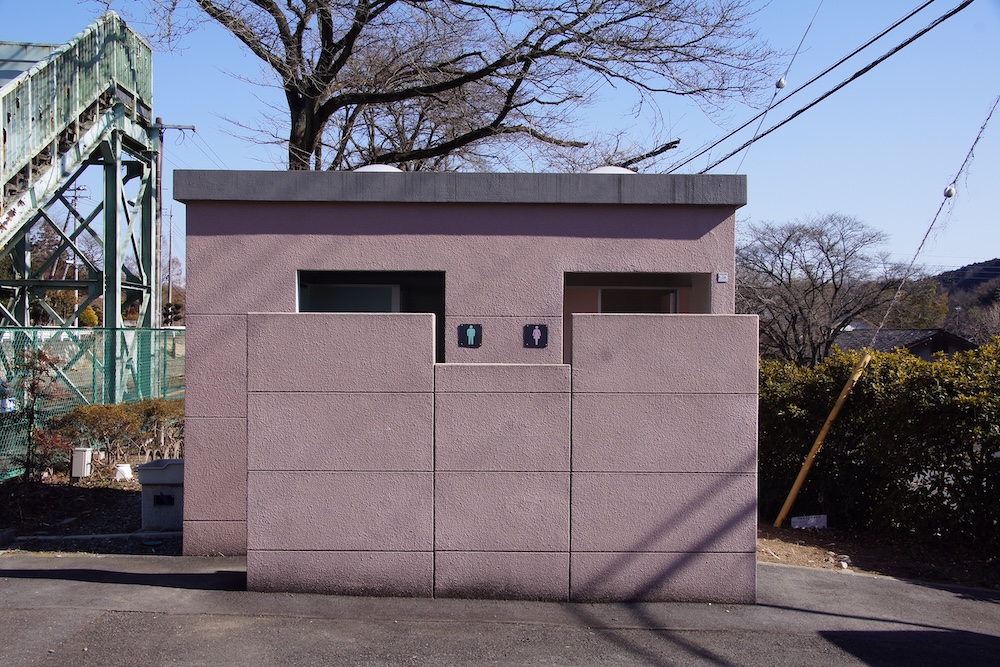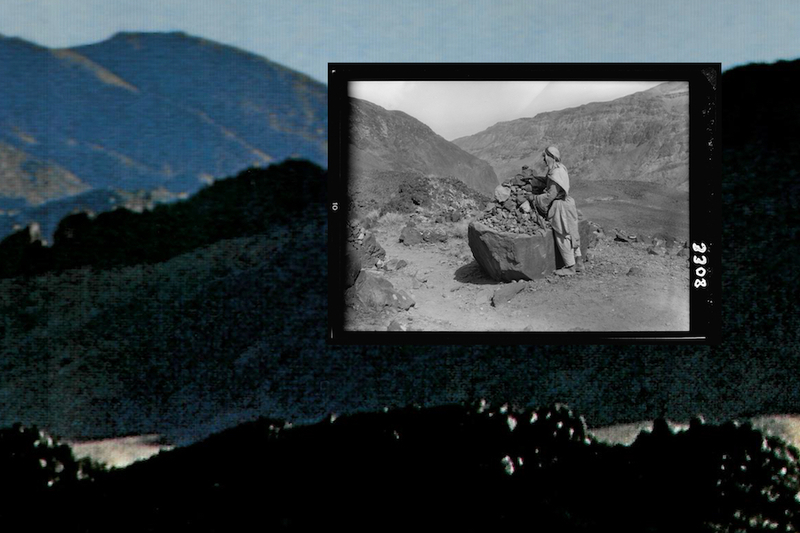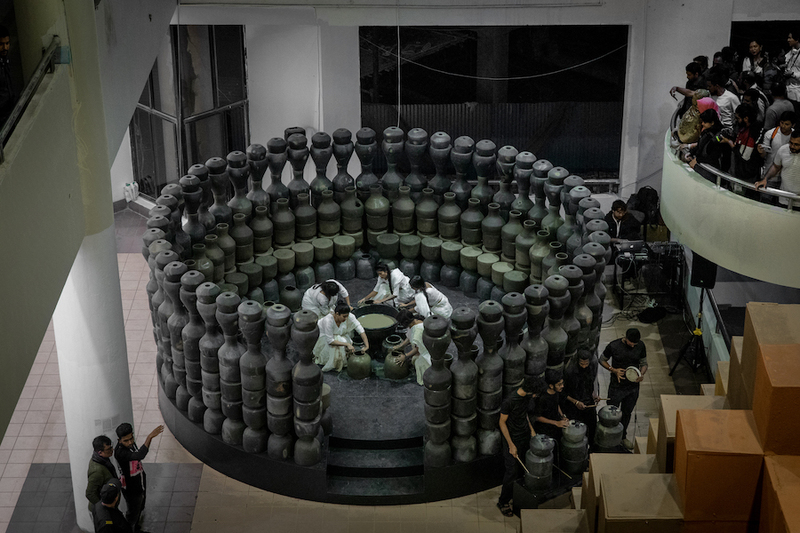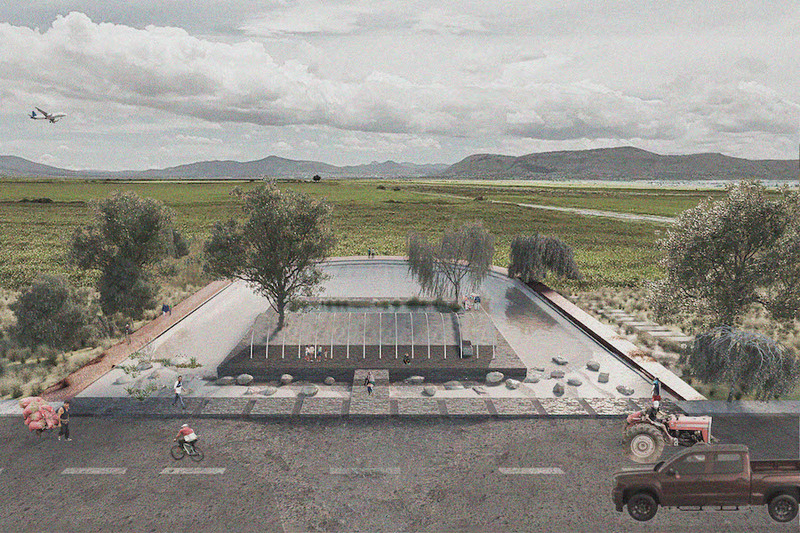Photos Asturio Cantabrio, CC BY-SA 4.0 and garycycles, CC BY 2.0
Wim Wenders' most recent film Perfect Days showcases an outstanding collection of public toilets of Tokyo. A hymn is sung to the beauty and cleanliness of these units of civil urban architecture and the human labor of maintaining the toilets in the state that brings, as Sōseki' puts it, “physiological delight.” The very special relationships that many Japanese people have with their toilets have been historically developing and attest to the long lasting tradition of treating these spaces as truly the “place of spiritual repose.” Below, EastEast is publishing an abstract from “In Praise of Shadows,” a 1933 essay by the Japanese novelist Jun'ichirō Tanizaki, which contains what is possibly the most poetic description of a toilet ever written. Tanizaki muses about the importance of light and shadow in creating a nuanced and meaningful architecture for human dwellings.
Every time I am shown to an old, dimly lit, and, I would add, impeccably clean toilet in a Nara or Kyoto temple, I am impressed with the singular virtues of Japanese architecture. The parlor may have its charms, but the Japanese toilet truly is a place of spiritual repose. It always stands apart from the main building, at the end of a corridor, in a grove fragrant with leaves and moss. No words can describe that sensation as one sits in the dim light, basking in the faint glow reflected from the shoji, lost in meditation or gazing out at the garden. The novelist Natsume Sōseki counted his morning trips to the toilet a great pleasure, “a physiological delight” he called it. And surely there could be no better place to savor this pleasure than a Japanese toilet where, surrounded by tranquil walls and finely grained wood, one looks out upon blue skies and green leaves.
All photos © The Tokyo Toilet Project / The Nippon Foundation
As I have said there are certain prerequisites: a degree of dimness, absolute cleanliness, and quiet so complete one can hear the hum of a mosquito. I love to listen from such a toilet to the sound of softly falling rain, especially if it is a toilet of the Kantō region, with its long, narrow windows at floor level; there one can listen with such a sense of intimacy to the raindrops falling from the eaves and the trees, seeping into the earth as they wash over the base of a stone lantern and freshen the moss about the stepping stones. And the toilet is the perfect place to listen to the chirping of insects or the song of the birds, to view the moon, or to enjoy any of those poignant moments that mark the change of the seasons. Here, I suspect, is where haiku poets over the ages have come by a great many of their ideas. Indeed one could with some justice claim that of all the elements of Japanese architecture, the toilet is the most aesthetic. Our forebears, making poetry of everything in their lives, transformed what by rights should be the most unsanitary room in the house into a place of unsurpassed elegance, replete with fond associations with the beauties of nature. Compared to Westerners, who regard the toilet as utterly unclean and avoid even the mention of it in polite conversation, we are far more sensible and certainly in better taste. The Japanese toilet is, I must admit, a bit inconvenient to get to in the middle of the night, set apart from the main building as it is; and in winter there is always a danger that one might catch cold. But as the poet Saitō Ryokū has said, “elegance is frigid.” Better that the place be as chilly as the out-of-doors; the steamy heat of a Western-style toilet in a hotel is most unpleasant.
Our forebears, making poetry of everything in their lives, transformed what by rights should be the most unsanitary room in the house into a place of unsurpassed elegance, replete with fond associations with the beauties of nature.
Anyone with a taste for traditional architecture must agree that the Japanese toilet is perfection. Yet whatever its virtues in a place like a temple, where the dwelling is large, the inhabitants few, and everyone helps with the cleaning, in an ordinary household it is
no easy task to keep it clean. No matter how fastidious one may be or how diligently one may scrub, dirt will show, particularly on a floor of wood or tatami matting. And so here too it turns out to be more hygienic and efficient to install modern sanitary facilities —tile and a flush toilet—though at the price of destroying all affinity with "good taste" and the “beauties of nature.” That burst of light from those four white walls hardly puts one in a mood to relish Sōseki's “physiological delight.” There is no denying the cleanliness; every nook and corner is pure white. Yet what need is there to remind us so forcefully of the issue of our own bodies. A beautiful woman, no matter how lovely her skin, would be considered indecent were she to show her bare buttocks or feet in the presence of others, and how very crude and tasteless to expose the toilet to such excessive illumination. The cleanliness of what can be seen only calls up the more clear thoughts of what cannot be seen. In such places the distinction between the clean and the unclean is best left obscure, shrouded in a dusky haze . . .
. . . And so it has come to be that the beauty of a Japanese room depends on a variation of shadows, heavy shadows against light shadows—it has nothing else. Westerners are amazed at the simplicity of Japanese rooms, perceiving in them no more than ashen walls bereft of ornament. Their reaction is understandable, but it betrays a failure to comprehend the mystery of shadows. Out beyond the sitting room, which the rays of the sun can at best but barely reach, we extend the eaves or build on a veranda, putting the sunlight at still greater a remove. The light from the garden steals in but dimly through paper-paneled doors, and it is precisely this indirect light that makes for us the charm of a room. We do our walls in neutral colors so that the sad, fragile, dying rays can sink into absolute repose. The storehouse, kitchen, hallways, and such may have a glossy finish, but the walls of the sitting room will almost always be of clay textured with fine sand. A luster here would destroy the soft fragile beauty of the feeble light. We delight in the mere sight of the delicate glow of fading rays clinging to the surface of a dusky wall, there to live out what little life remains to them. We never tire of the sight, for to us this pale glow and these dim shadows far surpass any ornament. And so, as we must if we are not to disturb the glow, we finish the walls with sand in a single neutral color. The hue may differ from room to room, but the degree of difference will be ever so slight; not so much a difference in color as in shade, a difference that will seem to exist only in the mood of the viewer. And from these delicate differences in the hue of the walls, the shadows in each room take on a tinge peculiarly their own.
“In Praise of Shadows” was written by Tanizaki in 1933 and translated into English in 1977 by the academic students of Japanese literature Thomas J. Harper and Edward Seidensticker.
Full text can be found here
Cover Image: Transparent toilets at Haru-no-Ogawa Community Park, Tokyo, 2021. Syced / Wikimedia Commons

Mudskipper-like restrooms in a park in Ogi
Peka / Wikimedia Commons
A public restroom in a standalone building in Kyoto
Grendelkhan / Wikimedia Commons
The unisex public toilet next to Itabu Station on the Kominato Railway in Chiba Prefecture
© DAJF / Wikimedia Commons / CC BY-SA 4.0
Japanese Toilet, location unknown
George Alexander Ishida Newman / Wikimedia Commons
Public toilets in Kasahara, Gifu Prefecture
Tomio344456 / Wikimedia Commons
Public Restroom in Funaiakua Park in Ōita
大分帰省中 / Wikimedia Commons
Public toilets at Abiki Station in Kasai, Hyōgo Prefecture
Corpse Reviver / Wikimedia Commons
The toilets outside Takezawa Station on the Hachiko Line in Saitama Prefecture
© DAJF / Wikimedia Commons / CC BY-SA 4.0



